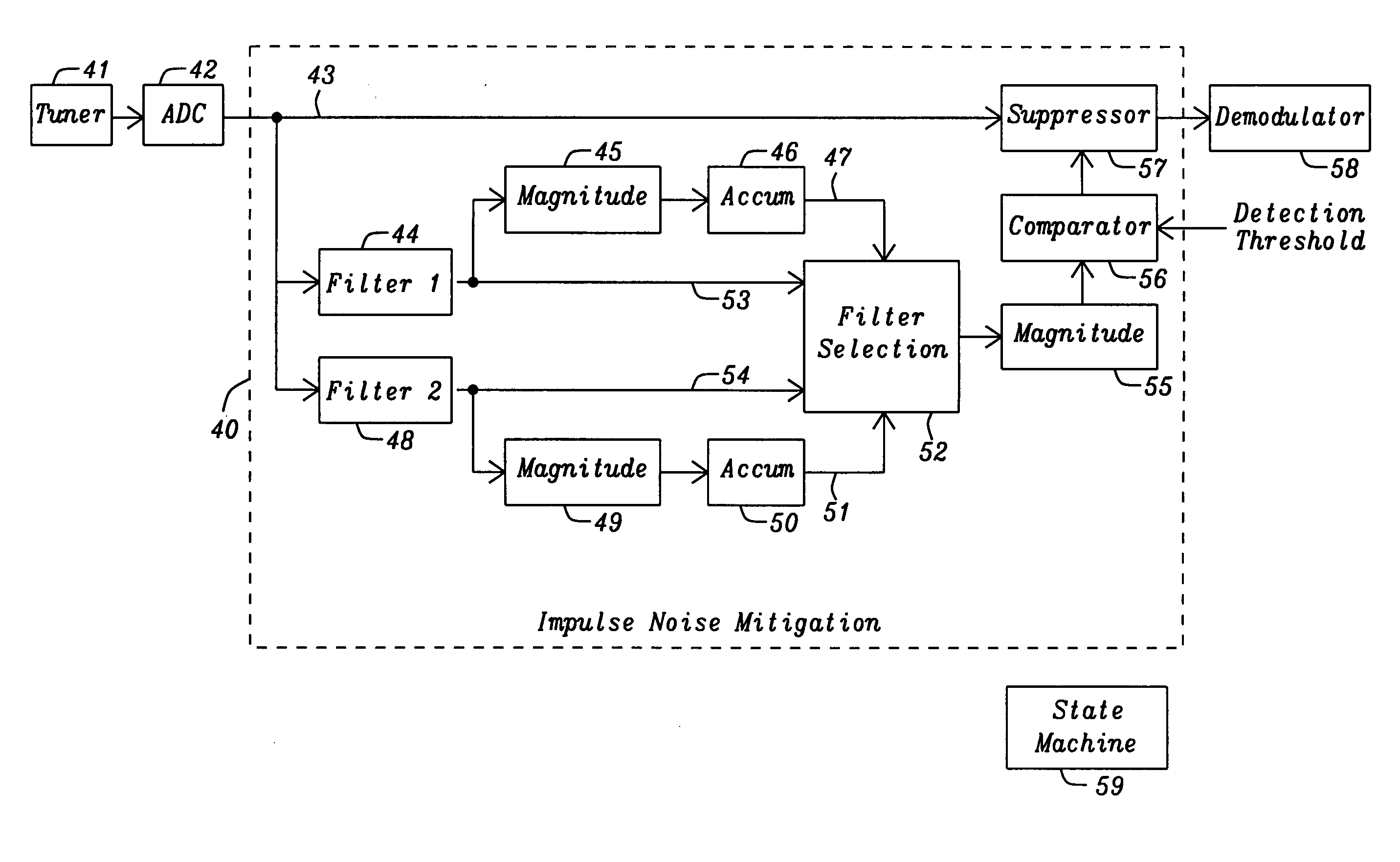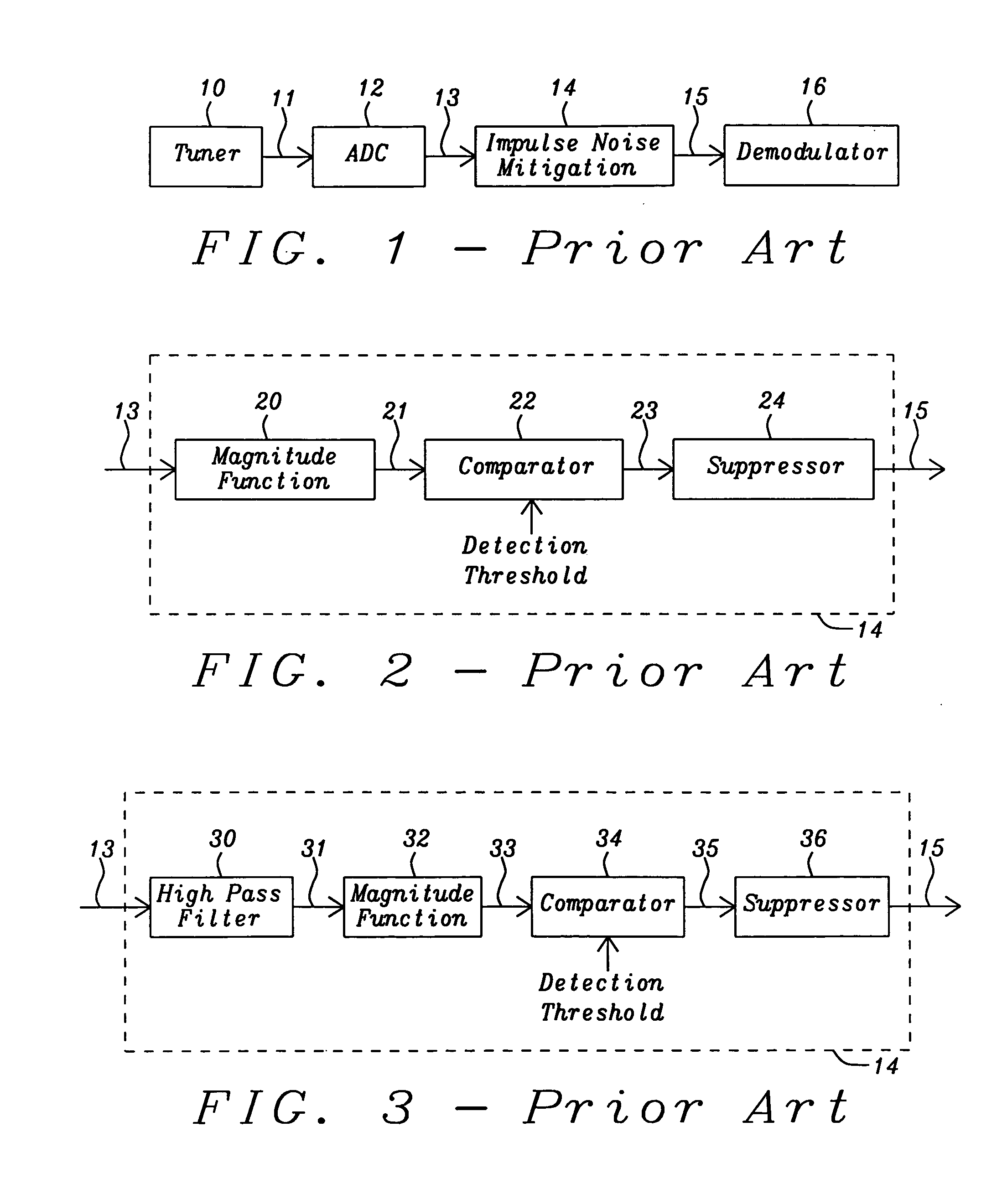Impulse noise mitigation under out-of-band interference conditions
a technology of impulse noise and interference conditions, applied in the field of wireless communication receivers, can solve the problems of unreliable detection of impulse noise, and inability to detect the presence of impulse noise, so as to reduce the energy of other noise interference signals, and mitigate impulse noise and other noise interference signals.
- Summary
- Abstract
- Description
- Claims
- Application Information
AI Technical Summary
Benefits of technology
Problems solved by technology
Method used
Image
Examples
Embodiment Construction
[0024]In FIG. 4 is shown a block diagram of the frequency domain impulse noise mitigation 40 of the present invention. The output of an analog tuner 41 is connected to an ADC 42 to convert the receiver analog signal into a digital signal. The output 43 of the ADC 42 is coupled to the impulse noise mitigation circuit 40 for the purpose of impulse noise detection. The output of the ADC 43 is also connected to the suppressor circuit 57. When impulse noise is detected from signal samples applied to the filters 44 and 48, these samples will be flagged with an impulse noise indicator, and then the mitigation is applied to the corresponding ADC output connected directly to the suppressor circuit 57.
[0025]Within the impulse noise mitigation circuitry 40 are two complex high pass filters 44 and 48, filter 1 and filter 2 respectively. Each of filter output is connected to a magnitude function 45 and 49, respectively, in which outputs of the magnitude functions are connected to accumulator cir...
PUM
 Login to View More
Login to View More Abstract
Description
Claims
Application Information
 Login to View More
Login to View More - R&D
- Intellectual Property
- Life Sciences
- Materials
- Tech Scout
- Unparalleled Data Quality
- Higher Quality Content
- 60% Fewer Hallucinations
Browse by: Latest US Patents, China's latest patents, Technical Efficacy Thesaurus, Application Domain, Technology Topic, Popular Technical Reports.
© 2025 PatSnap. All rights reserved.Legal|Privacy policy|Modern Slavery Act Transparency Statement|Sitemap|About US| Contact US: help@patsnap.com



